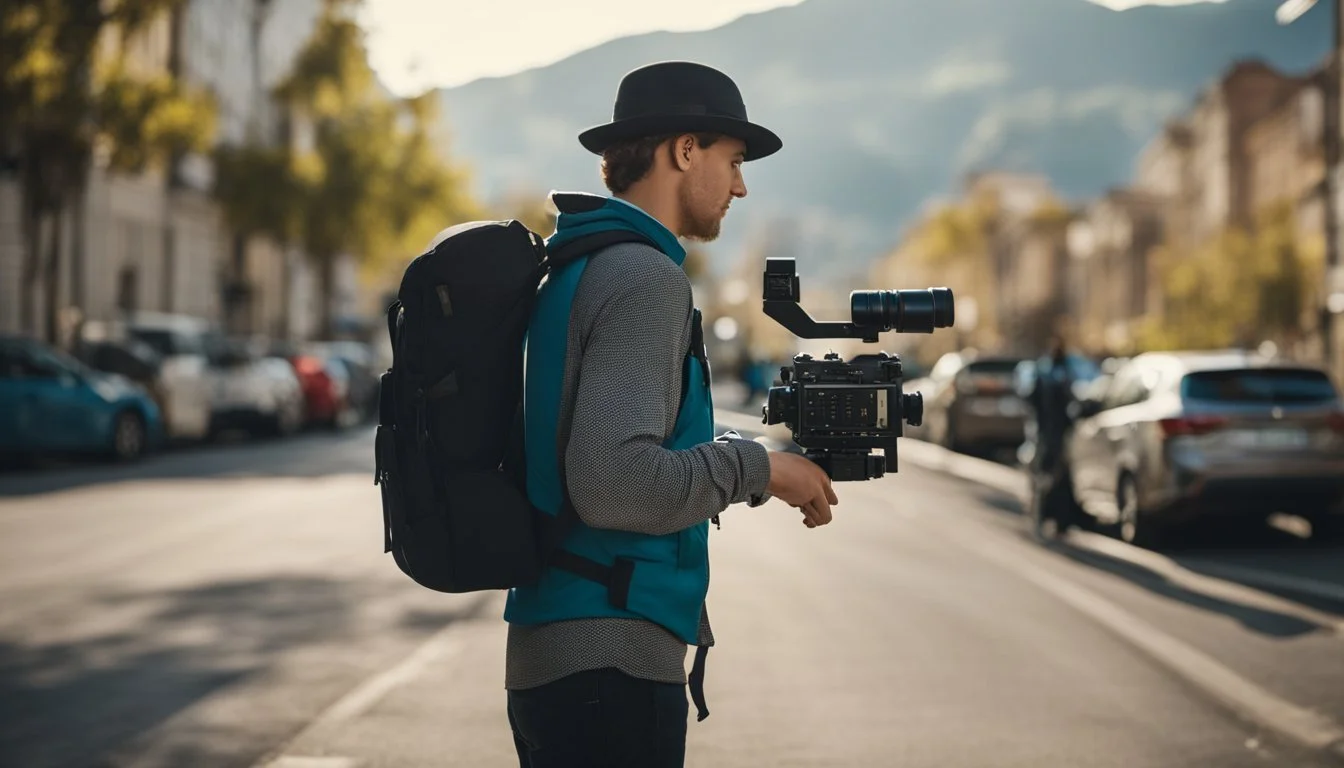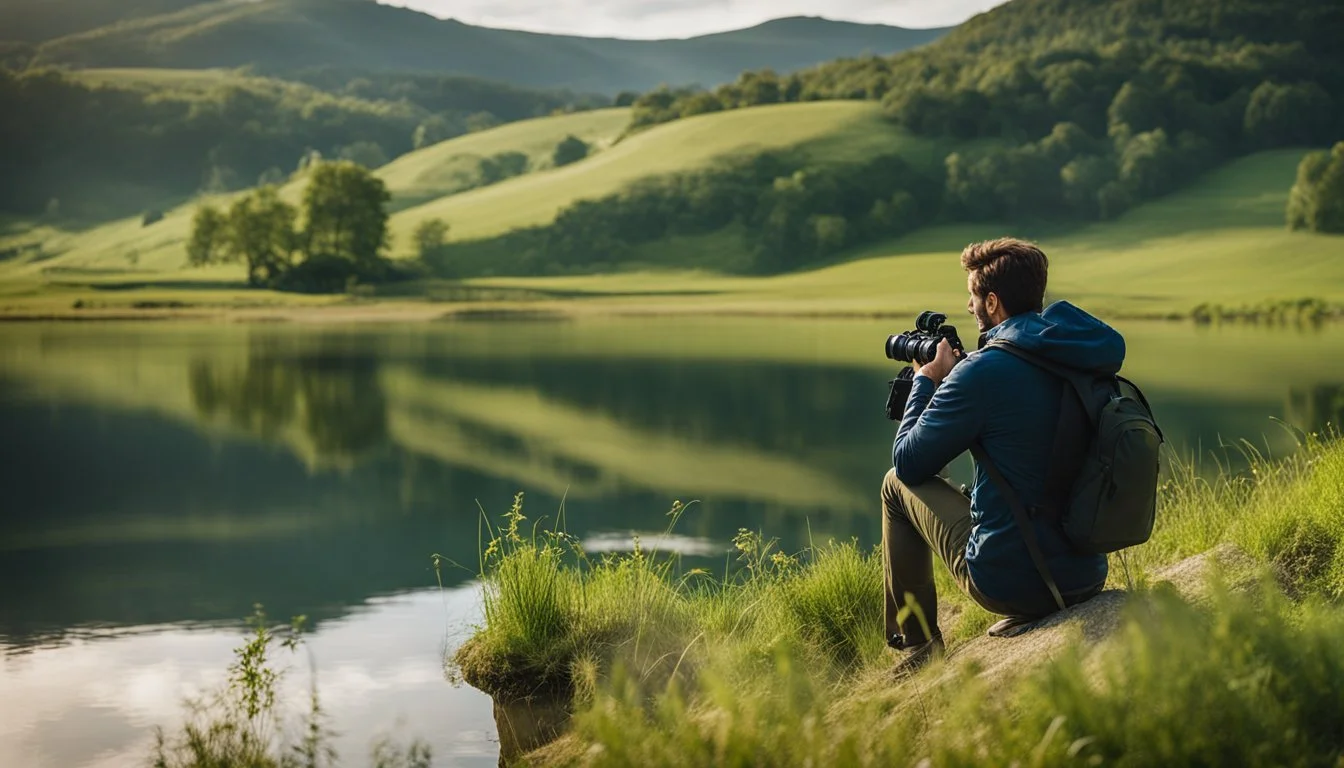The Role of the Location Scout
Discovering Ideal Film Settings
A film's setting is vital in bringing its story to life, and a location scout plays a crucial role in this aspect of film production. They step in during pre-production to research, photograph, and secure real-world locations that align with the screenplay's needs. The primary goal of a location scout is to find settings that not only enhance the narrative but also create an authentic atmosphere for the audience.
In addition to visual appeal, practi considerations also influence location selection. Factors such as accessibility, permits, and the logistical feasibility of shooting at a location are rigorously evaluated. This meticulous process ensures that each scene is shot in a place that is both suitable for the story and convenient for the production team.
Location scouts often rely on various resources to find ideal spots. Online platforms like Unsplash and Airbnb, along with traditional scouting visits, help them uncover hidden gems. By blending creativity with practicality, location scouts ensure that the final shoot locations contribute meaningfully to the film's success.
Understanding the Role of a Location Scout
A location scout plays a vital role in the filmmaking process. They are responsible for identifying and securing ideal sites for shooting various scenes. This involves evaluating places based on the script's requirements and the director's vision.
Scouts work closely with directors and producers to understand the narrative and visual style of the film. They then identify potential locations that align with these elements while adhering to budget constraints.
Key Responsibilities
Evaluating potential filming locations
Collaborating with directors to match locations to the script
Considering logistical elements like lighting, accessibility, and permits
Essential Skills
Creativity: To visualize how a location can enhance a story
Attention to detail: For evaluating practicalities
Negotiation skills: To secure rights and stay within budget
Tools and Methods
Photography: Scouts take extensive photos of potential sites to present to the production team
Research: In-depth research on locations, including historical significance and current conditions
Networking: Building relationships with property owners, local authorities, and other stakeholders
The role of a location scout is multifaceted, requiring a blend of artistic vision and logistical planning. Their work ensures that each setting contributes meaningfully to the storytelling while being practical for production needs.
Pre-Production Planning
Effective pre-production planning is paramount for a successful location scouting process. Key aspects include thoroughly reading the script, engaging in initial discussions with the director and production designer, and making budget considerations.
Reading the Script
The location scout begins by meticulously reading the script. This helps identify potential locations that align with the narrative's demands. Specific scenes often require unique settings, and the script provides crucial details about the atmosphere, era, and style necessary for each scene.
Understanding these elements enables the scout to envision possible locations and note any special requirements. For example, a scene set in a bustling marketplace will need a location that feels vibrant and authentic. This phase lays the groundwork for the entire scouting process.
Initial Discussions with the Director and Production Designer
Early conversations with the director and production designer are essential. These discussions help the location scout grasp the creative vision and practical needs of the film. The director's artistic vision and the designer’s practical requirements must be harmonized to find suitable locations.
During these meetings, the team discusses visual styles, thematic elements, and logistic requirements. For instance, if the film includes nighttime scenes, the scout needs to ensure the location has adequate lighting capabilities or permits for night shooting. These discussions are vital for aligning on expectations and ironing out potential issues early.
Budget Considerations
Budget constraints are a critical aspect of pre-production planning. Location scouting must align with the financial limitations of the project. This involves considering costs related to permits, insurance, travel, and potential modifications to the location.
The scout works closely with the production manager to prioritize essential locations while finding cost-effective solutions. For example, scouting multiple locations in a single area can reduce travel expenses. By balancing artistic and practical needs with the budget, the location scout ensures that selected sites are not only perfect for the film’s vision but also feasible financially.
The Scouting Process
Location scouting is a detailed and methodical activity. It incorporates initial research, capturing visuals of potential sites, and evaluating practical aspects like logistics and accessibility.
Research and Preliminary Scouting
Research is the backbone of successful location scouting. Scouts begin by reading the script to understand the setting and mood needed for each scene. They list key requirements like specific architectural styles or natural features.
Scouts often use tools like online databases, photographs, and maps to identify potential sites. Preliminary visits help determine if a location meets the aesthetic and logistical needs before more in-depth evaluations.
Photographing Potential Locations
Photographing potential locations is crucial. It involves capturing various angles, lighting conditions, and key features of each site. This visual documentation helps directors, producers, and other stakeholders envision the location’s suitability for the film.
Scouts typically use high-resolution cameras and sometimes drones for aerial views. They also take detailed notes, ensuring all important aspects are documented, including natural light availability and any changes needed to fit the script.
Assessing Logistics and Accessibility
Assessing logistics and accessibility is a vital part of the scouting process. Scouts evaluate how easy it is to transport equipment and crew to the location. They look into the availability of parking, proximity to facilities for the cast and crew, and any potential safety issues.
The scout also checks local regulations, permits needed, and any restrictions that might affect filming. This helps in creating a detailed plan that ensures a smooth production process.
Collaboration with Filmmaking Departments
Location scouts must work closely with various filmmaking departments to ensure the chosen locations meet all aesthetic, technical, and logistical requirements. Effective collaboration can elevate a film's quality, while poor coordination can lead to costly delays and compromises.
Aligning with the Art Department
The art department plays a critical role in establishing a film's visual style. Location scouts collaborate with art directors to ensure selected sites match the desired look and feel. This involves reviewing location photos, understanding design specifics, and sometimes modifying locations to suit the narrative. The art department and the location scout may need to adapt existing structures or add set pieces, ensuring seamless integration with the film’s aesthetic vision.
Coordinating with the Camera Crew
The camera crew has technical needs that must be considered during location scouting. Scouts work with directors of photography (DPs) to evaluate light quality, shooting angles, and space constraints. This collaboration helps determine whether a location can accommodate necessary camera equipment and movements. For instance, tight spaces may require specialized gear, while wide-open areas might need considerations for lighting setups and power sources.
Securing Permissions and Clearances
Securing permissions is a vital part of a location scout's role. This task involves negotiating with property owners, obtaining legal clearances, and handling any associated fees. Scouts need to ensure all necessary permits are in place before filming begins. They work closely with legal advisors to ensure compliance with local regulations. Failure to secure proper permissions can halt production and result in significant financial losses.
Communicating with Local Authorities and Communities
Maintaining good relationships with local authorities and communities is essential for hassle-free filming. Scouts must communicate filming schedules, potential disruptions, and ensure community support. This involves coordinating with local law enforcement for traffic control and securing necessary civic permissions. Engaging with community leaders can also alleviate concerns and foster a supportive environment for the film crew.
Effective collaboration among the various departments ensures that the chosen locations not only look right but also function properly for filming, minimizing unexpected problems.
Technical Aspects of Locations
When selecting a location for a film, lighting is a primary technical factor. Natural light availability can significantly influence shooting schedules and equipment needs.
Sound quality is another crucial element. Locations near traffic or other noise sources may require additional audio equipment or post-production work.
Power supply is essential. Filming often requires robust electrical setups for cameras, lights, and other gear.
Evaluation of accessibility ensures the crew and equipment can reach the site without complications. This includes considering road conditions and parking availability.
Weather conditions play a role as well. Locations should ideally have predictable weather patterns or alternatives for unfavorable conditions.
Permissions and legal clearances are mandatory. Location scouts must secure appropriate permits to avoid legal complications.
Lastly, safety protocols must be established. This includes making sure the location is free of hazards and has emergency plans in place.
Technical Factor Importance Lighting Affects visuals and schedule Sound Quality Minimizes post-production issues Power Supply Ensures equipment functionality Accessibility Facilitates smooth operations Weather Influences scheduling and equipment needs Legal Clearances Prevents legal issues Safety Protocols Ensures crew safety
Challenges and Problem Solving
Location scouts face a myriad of challenges while searching for the perfect filming locations. These challenges often require quick thinking, adaptability, and effective problem-solving skills.
Dealing with Unpredictable Weather
Unpredictable weather is a constant obstacle in location scouting. Rain, snow, or extreme heat can disrupt shooting schedules and affect the availability of a location.
Scouts often monitor weather forecasts and have backup plans to deal with sudden changes. For scenes needing a specific climate, being aware of seasonal patterns is crucial. They might also need to arrange for additional equipment like tents, heaters, or rain covers to protect both crew and equipment.
Navigating Location Limitations
Every location comes with its own set of limitations. These can include restricted access, limited space for equipment, or local noise ordinances. Scouts must thoroughly investigate these constraints before finalizing the site.
Permissions and permits are typically required, and navigating bureaucracy can be time-consuming. Furthermore, scouts need to ensure that the location can accommodate the entire crew and all necessary equipment without compromising the quality of the shoot.
Contingency Planning
Contingency planning is vital for any location scout. Unforeseen events such as sudden location unavailability or logistical issues can arise at any time.
Scouts usually identify multiple backup locations that can serve as alternatives should the primary option become unusable. They also collaborate with local authorities and communities to secure these secondary locations and ensure easy transitions, minimizing downtime and keeping the production process moving smoothly.
The Impact of Locations on Storytelling
Locations deeply influence a film's narrative and atmosphere. They provide context and background for the story, helping viewers immerse themselves in the plot. A well-chosen location can reflect a character's emotional state or the socio-economic backdrop of the story.
Atmosphere Creation: Locations set the tone for scenes. A dark alley might create suspense, while a beach could convey tranquility.
Character Development: Settings can mirror a character's inner journey. A dilapidated house may symbolize decay or turmoil.
Historical Accuracy: Authentic locations enhance credibility, especially in period pieces, by accurately depicting the era.
Locations also impact the logistics of filmmaking. Accessibility, permits, and lighting conditions are practical aspects that a location scout evaluates to ensure that the chosen setting supports the production smoothly.
Ultimately, locations are more than mere backgrounds. They become characters in their own right, enriching the story by adding layers of meaning and authenticity.
Advancements in Location Scouting Technology
Modern technology has greatly enhanced the capabilities of location scouts. Drones are now widely used to capture aerial views and panoramic shots of potential locations, providing a comprehensive overview without needing extensive on-site visits.
Geotagging and GPS have also become indispensable tools. Scouts can now precisely mark locations, ensuring accurate retrieval and mapping. Geolocation data helps in planning logistical aspects, saving time and resources.
The use of virtual reality (VR) has brought transformative change. Scouts can create virtual tours of locations to present to directors and producers remotely. This allows teams to experience sites in immersive 3D, making decision-making faster and more accurate.
Augmented reality (AR) applications assist in visualizing a location with added props or set designs. By overlaying digital elements onto real-world scenes, scouts can showcase how a location might look post-transformation.
Online databases and location libraries have expanded access to a range of sites worldwide. These databases often include high-quality images, detailed descriptions, and logistical information. Scouts can efficiently shortlist potential locations without initial travel.
3D mapping software provides detailed topography and site plans. These tools help scouts understand the physical environment better, identifying potential challenges and opportunities early on.
Mobile apps specific to location scouting streamline the process further. These apps enable instant documentation, sharing of photos, and collaboration among team members in real time.
By harnessing these technologies, location scouts can achieve greater efficiency, accuracy, and creativity in finding the perfect settings for films.
The Ethical Considerations in Location Scouting
Location scouts must navigate a complex range of ethical considerations to ensure their activities do not have a negative impact on the communities and environments involved.
Respecting Local Communities
Scouts should always respect the privacy and cultural practices of local residents. This includes obtaining permissions and ensuring that filming activities do not disrupt daily life excessively.
Environmental Impact
Minimizing the environmental footprint is crucial. Scouts should ensure that natural settings are left undisturbed, avoiding harm to wildlife and ecosystems. This includes proper waste management and following guidelines to prevent damage.
Legal Compliance
Scouts must comply with all local, national, and international laws. This involves securing the necessary permits and adhering to regulations regarding the use of public and private properties.
Fair Compensation
Ensuring that locations are fairly compensated for their use is vital. This includes negotiating rights, offering fair market rates, and compensating any potential inconveniences or damages incurred.
Health and Safety
Taking into account the health and safety of both the crew and local residents is non-negotiable. This means proper risk assessments, safety protocols, and necessary precautions to prevent accidents or hazards.
Cultural Sensitivity
Scouts need to be culturally sensitive, ensuring that their activities do not disrespect or misrepresent local customs and traditions. This involves comprehensive research and possibly consulting with community leaders.
Transparency
Maintaining transparency about the intent of the shoot and its potential impact on the location and community builds trust and helps prevent misunderstandings or conflicts.
Finalizing Locations and Wrap-up
Once potential locations are identified, the next step involves thorough evaluations. Location scouts must consider logistical factors, such as accessibility, safety, and availability for the required shooting schedule.
It's also essential to secure necessary permissions and permits. This often involves negotiations with property owners or local authorities. Clear communication ensures that everyone understands usage terms and responsibilities.
A location agreement is then drafted. It outlines the terms for using the location, addressing issues such as damages, insurance, and filming dates. This document is crucial for both legal protection and smooth operations.
Site visits are crucial before finalizing. Multiple visits allow the production team to visualize scenes and fine-tune details. They also help identify potential issues that could arise during filming.
Creating a location dossier can be beneficial. This dossier includes pictures, maps, and detailed notes about each location. It serves as a useful reference for the production team throughout the shooting process.
Finally, wrapping up involves confirming all logistics. Ensuring that all permits are in order and that the locations are prepared for the cast and crew's arrival is vital. This thorough preparation minimizes disruptions and facilitates a smooth filming process.





